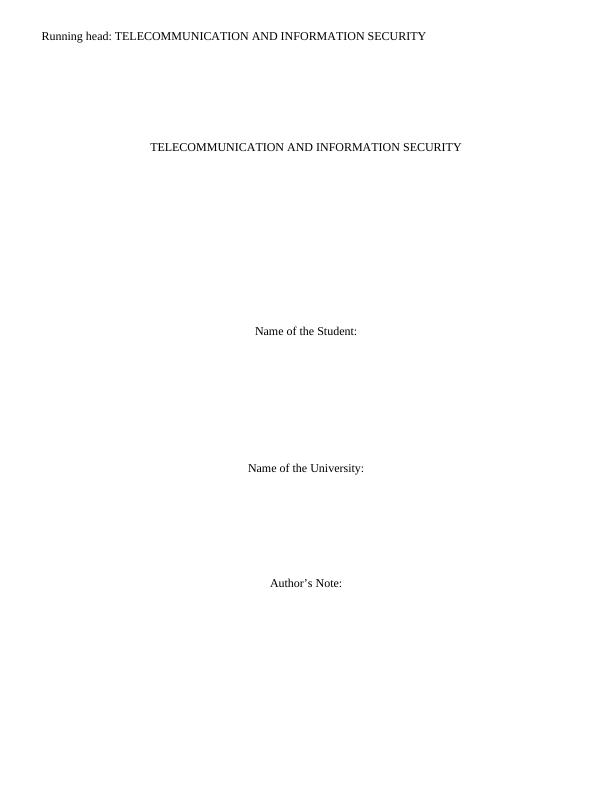Telecommunication And Information Security
The final assessment is a five-question essay assignment that requires understanding of network devices, VPNs, and their applications.
15 Pages3211 Words14 Views
Added on 2022-08-18
Telecommunication And Information Security
The final assessment is a five-question essay assignment that requires understanding of network devices, VPNs, and their applications.
Added on 2022-08-18
ShareRelated Documents
End of preview
Want to access all the pages? Upload your documents or become a member.
Secure Network Operations | Assignment
|5
|1098
|10
Different Types of Network Cables - Cat 3, Cat 5, Cat 5e, Cat 6, Cat 6a, Cat 7
|7
|1785
|126
COMP609 - Networking Devices Assignment
|5
|872
|67
LAN technologies and their role in Organisation | Report
|50
|6692
|117
Understanding Network Components: Servers, Switches, Routers, and LAN Cables
|53
|3138
|62
IT Networking Project For Restaurant
|10
|1334
|129




